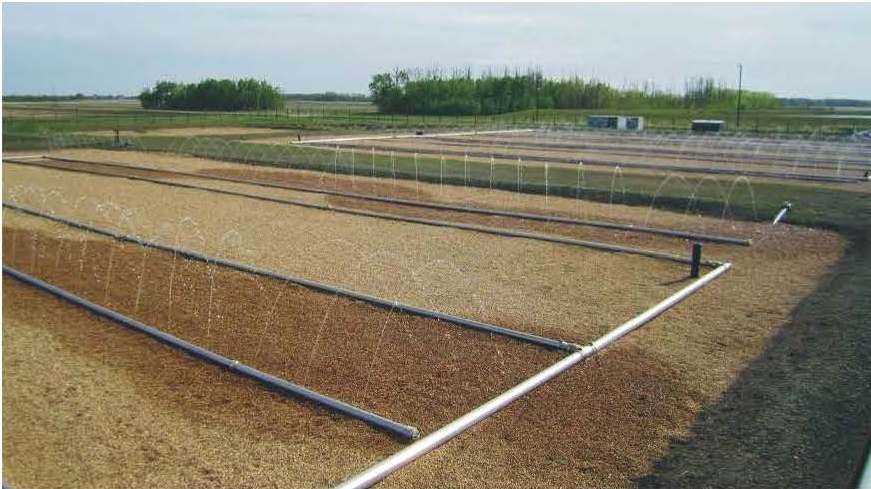YEG is now using a stormwater storage and treatment process that is better for the environment than previous methods. During this process, the natural breakdown of glycol from the spent deicing fluid results in ethanol (common alcohol) and acetic acid (vinegar), which can generate a chemical odor. Organic matter from vegetation in the stormwater ditches and holding ponds can cause an even stronger odor.
Stormwater treatment
A winter city means a lot of deicing on the runway
How we manage deicing fluid
One of our most significant environmental responsibilities is treating the deicing glycol after it is used.
In the past, we used a natural wetland system to treat glycol-contaminated stormwater.
But, with the growth in air traffic, our deicing fluid use has increased from 500,000 litres in 2006 to 3.5 million litres today. We needed a better way to deal with the stormwater.
We have new systems and procedures to handle and treat deicing fluid.
Here’s how it works:
- We recover fluid from the deicing pads
- The spent (used) fluid is sent to the stormwater collection and containment system (SCCS) for treatment
- The fluid is treated in a subsurface aerated biofilter treatment facility or SABTF

Stormwater FAQs
The biofilter system operates most efficiently when warmer night time temperatures are reached (usually in mid-May). The contaminated stormwater is stored in retention ponds until it can be treated. As the fluid sits, chemical reactions start to naturally occur, creating odors that are not harmful but can be unpleasant for the short-term.
YEG completed an air quality study confirming that the odor presents no health risk and contains compounds at concentrations well below provincial air quality criteria.
However, if you are concerned that the scent may come from another source such as a natural gas leak, please contact your natural gas provider immediately.
Odor in the holding ponds is caused by the breakdown of deicing fluid which contains ethanol (common alcohol) and acetic acid (vinegar) and produces an odor similar to common cleaning products. When the glycol breaks down in the presence of organic matter, the odor can range from sweet (glycol) to pickled garlic (glycol and organic matter breaking down simultaneously).
In contrast, natural gas is deliberately scented with a sulfur-based additive that smells like rotten eggs.
If you are uncertain, you should immediately seek professional advice from your gas utilities company.
If you smell natural gas outside, call your local utility company emergency line and keep people and ignition sources away from the area.
If you smell natural gas inside a building, leave immediately and call your local utilities emergency line.
YEG completed an air quality study that confirmed the odor presents no health risk and contains compounds at concentrations well below provincial air quality criteria.
Since 2015 we have invested $10 million to expand and improve the stormwater holding and biofilter systems to speed up the treatment process.
We are also experimenting with large blower fans and an odor-neutralizing agent to reduce the intensity of the odor and the distance it travels.
The stormwater biofilter system is an advanced environmental technology that uses biofiltration to remove contaminants from runoff before it is returned to our community ecosystems.
Water collected by the stormwater catchment is fed into the biofilter, which uses a combination of aeration and assisted the biological activity to remove impurities and contaminants. The system is weather dependent and operates most efficiently when nighttime temperatures are warm enough to sustain the continuous movement of water in the system.
